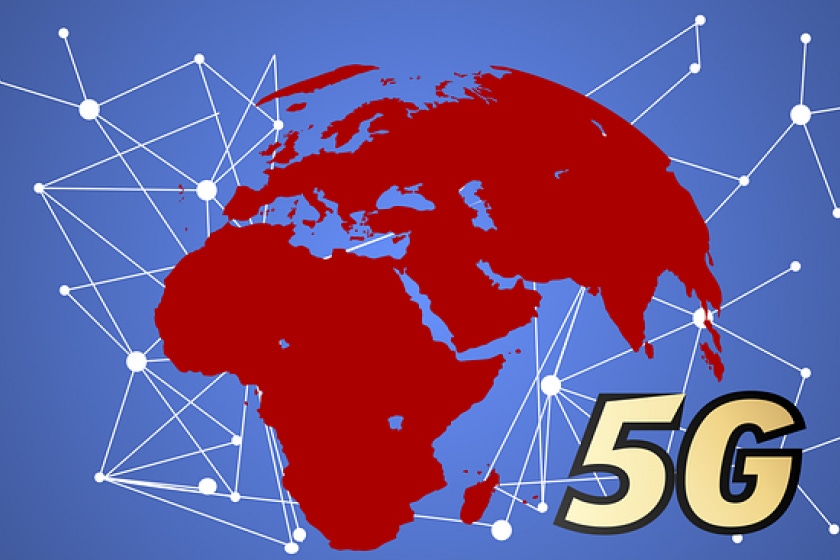Realizing the Full Potential of 5G Requires Converged Networking
To deliver on 5G’s full potential, enterprises need a broad, integrated, and automated approach in which security, networking, and compute work as an integrated solution.
April 15, 2021

Macro trends like digital transformation, the Internet of Things (IoT), and the shift to remote work rapidly forced almost every organization to redesign their networks for better business outcomes and user experiences. As a result, the network perimeter is more complex and expansive than ever before. It now extends across the entire IT infrastructure, from home offices, branches, and data centers to multiple cloud platforms. With these changes come new requirements for security across all of the edges – from the LAN, WAN, data center, and cloud edges.
The global, rapid business response to COVID-19 highlighted the need for business continuity plans that include flexible, anywhere, anytime, secure remote access to any information, using any application, on any device, from any location – and at scale. Fully realizing the potential of all these changes requires a new approach in which networking and security are converged.
The 5G promise
A varied crop of new value-added innovations is now possible due to 5G technology’s high-performance capabilities. There has been an explosion in the number of connected devices, collecting and sharing information that enables the predictive, proactive processes for better performance and experiences. Autonomous production lines, predictive maintenance, remote surgery, smart cities, and real-time, AI-assisted traffic management are just some of the big data use cases powered by 5G.
However, the enablement of these new capabilities comes at a cost. 5G networks enable the implementation of many connected devices and expands the attack surface, adding greater levels of complexity – essentially increasing security challenges.
An integrated approach is needed
To deliver on 5G’s full potential, enterprises need a broad, integrated, and automated approach in which security, networking, and compute work as an integrated solution. A siloed approach won’t work; because today’s networks are highly fluid, security cannot operate as a separate solution isolated from the business demands that constantly shift and shape the network.
Networks view users and applications as identities that extend across the distributed network, both on- and off-premises. They are designed to ensure consistent access and performance of any transaction from end to end. Most traditional security products, however, are still focused on securing a specific place in the network or, at best, monitoring a single network segment.
Today’s contactless commerce business models require networking, security, and computing to work as an integral solution at high speeds with very tight performance tolerances. Accordingly, security and networking must function as a single, integrated system. By converging the two, whenever the networking infrastructure evolves or expands, security is able to automatically adapt and scale as an integrated part of that environment, protecting the extended identity of a user or device to ensure consistent protection while enabling accelerated performance across all network edges.
A security-driven networking strategy dovetails security and networking into a single system that ensures that whenever the networking infrastructure responds to changing business or connectivity requirements, security automatically adapts as an integrated part of that environment.
Solving performance and connectivity challenges
Bringing it all together requires more than just physical integration, which represents only part of the challenge. Performance and interconnectivity between these two areas are also crucial. Network and security policies need to be able to adapt constantly with evolving requirements, especially as the world transitions to 5G and edge computing.
Accelerated digital innovation is knocking at the door. Billions of new, high-performance connected devices will create new network edges, many of them on an ad hoc and temporary basis. We will see new immersive applications, such as virtual reality and augmented reality-based communications, rich streaming media, and interactive tools that create collaborative experiences that will soon become business-critical. These solutions will then tie multiple services together in new ways, enabling intelligent systems such as smart transportation, smart buildings and cities, and smart infrastructures. Protecting these environments will require the convergence of networking and security to ensure the confidentiality, integrity, and availability of data across highly distributed networks.
Be prepared for 5G and beyond
Current and future challenges require next-generation security solutions built on the principles of convergence, integration, adaptability, and performance. 5G is just the beginning. As new technologies and business requirements call for more performance and agility, a converged approach to security and networking will be needed. The shift to cloud and edge compute, along with the emergence of 5G networks, requires more than just a few network architecture changes. A new approach that integrates networking, security, and compute, also delivers better outcomes and experiences.
Jonathan Nguyen-Duy is vice president, global field CISO team at Fortinet.
Read more about:
5GAbout the Author(s)
How to Amplify DevOps with DevSecOps
May 22, 2024Generative AI: Use Cases and Risks in 2024
May 29, 2024Smart Service Management
June 4, 2024

